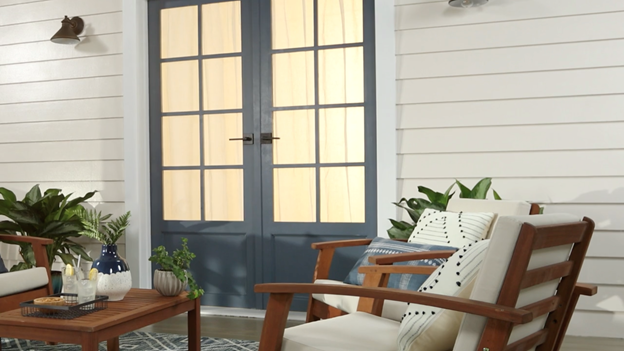Actual color may vary from on-screen representation.
WHEN TO PAINT EXTERIORS
Here are a few things to look out for – so if you see any of these, it’s probably time for a fresh coat of paint.
- Chipping
- Peeling
- Color fading
STEP 1: CHOOSING A COLOR
There are many factors in choosing a new color for your exterior. If you don’t know where to start, you can get a free consultation from our color experts. You can also explore color families or check out our Colors of the Year.
For more on choosing a color, check out our color selection how-to.

STEP 2: PREP THE EXTERIOR SURFACES
Remove or cover any nearby outdoor furniture and decor, then assess the condition of the surface. Repair any chipping, rotting or other damage to the walls and trim. Anything that can’t be repaired should be replaced.
Next, scrape away any old, flaking paint and sand down any raised or rigid spots. This will take some time, but makes painting so much easier.

WARNING! Removal of old paint by sanding, scraping or other means may generate dust or fumes that contain lead. Exposure to lead dust or fumes may cause brain damage or other adverse health effects, especially in children or pregnant women. Controlling exposure to lead or other hazardous substances requires the use of proper protective equipment, such as a properly fitted respirator (NIOSH approved) and proper containment and cleanup. For more information, call the National Lead Information Center at 1-800-424-LEAD (in US) or contact your local health authority.
Adequate ventilation required when sanding or abrading the dried film. If adequate ventilation cannot be provided wear an approved particulate respirator (NIOSH approved). Follow respirator manufacturer's directions for respirator use.


